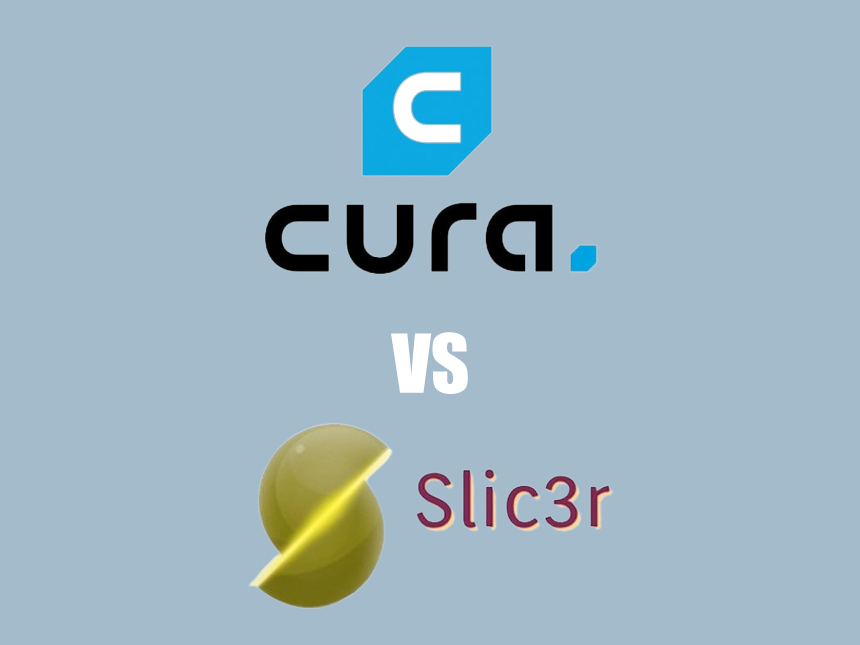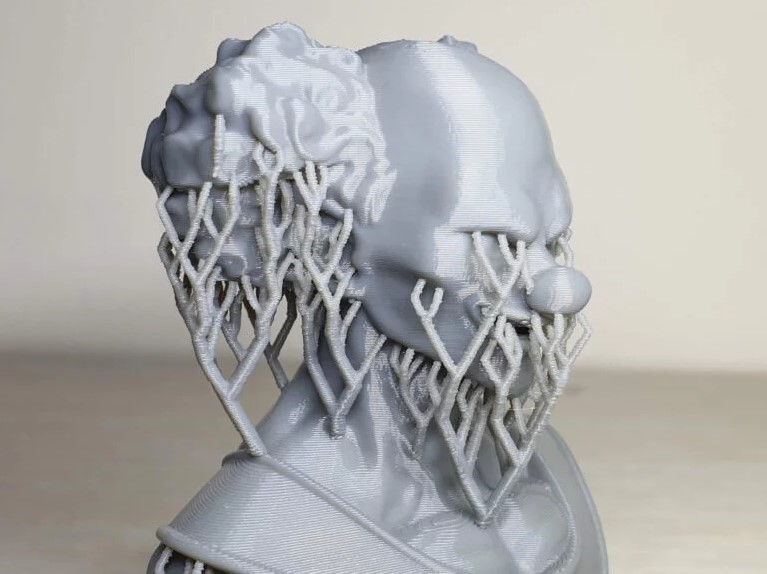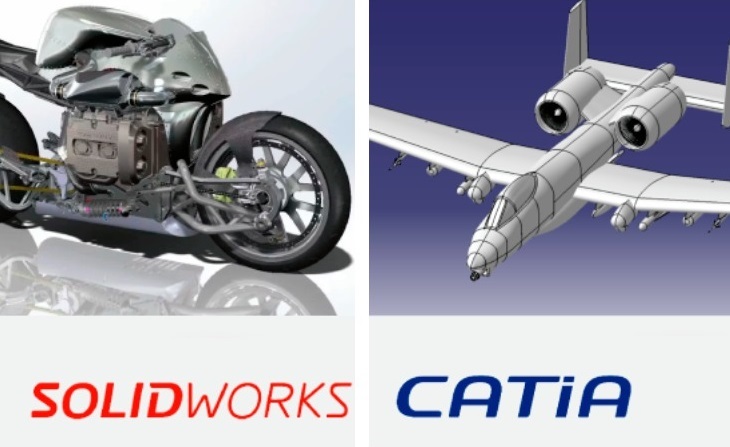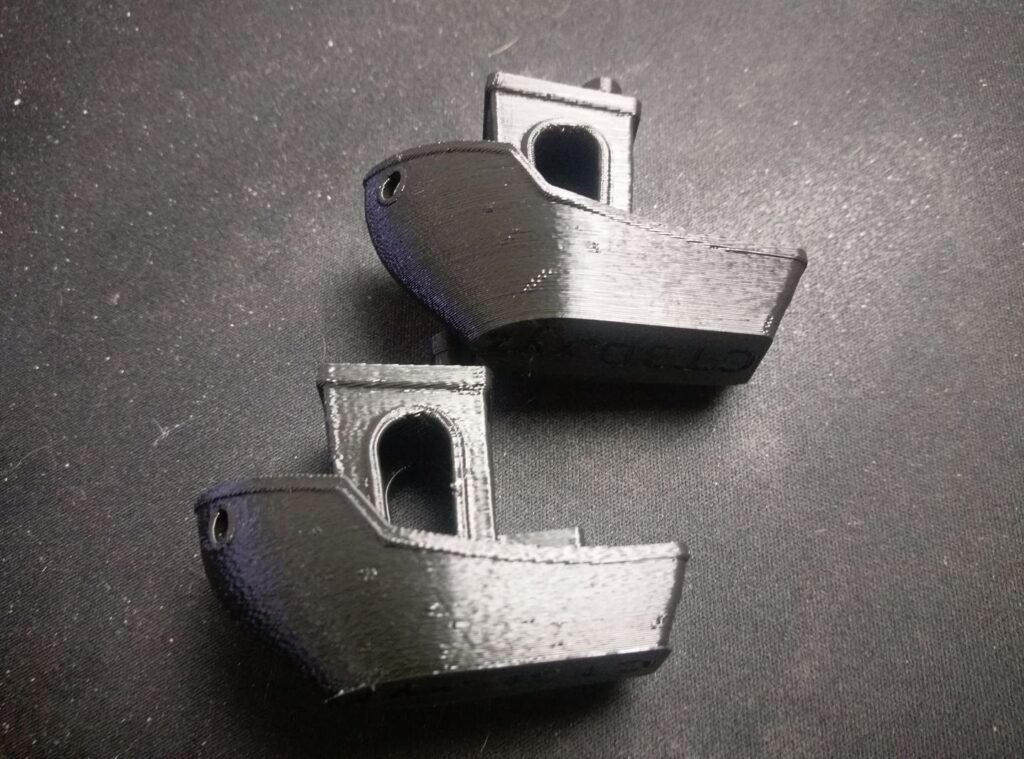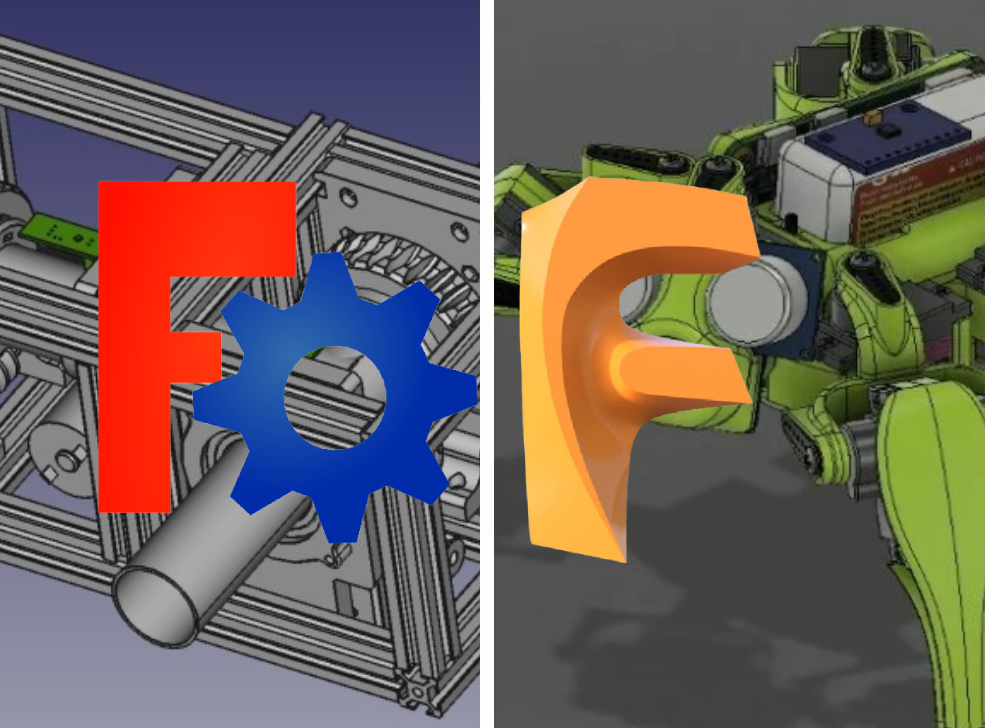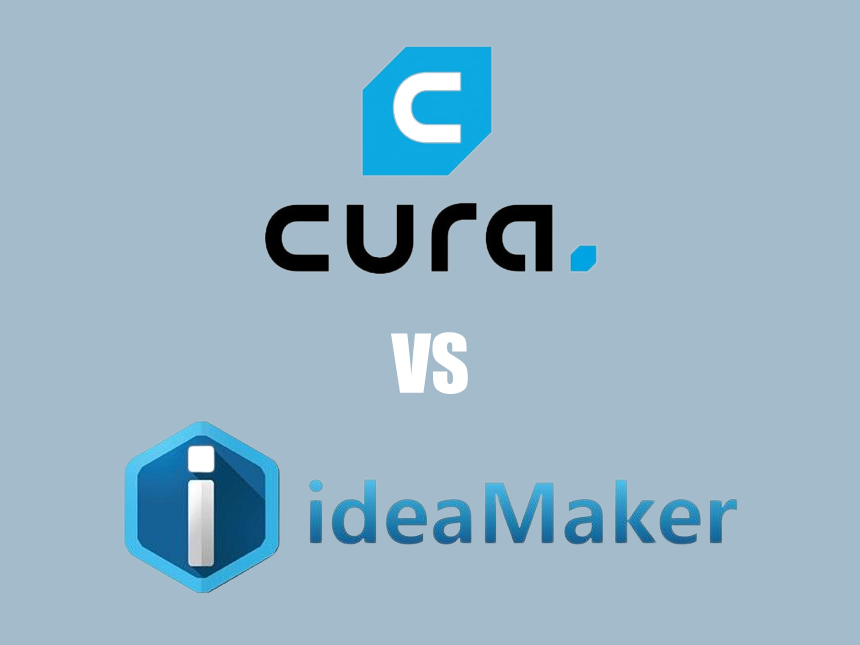

One of the wonderful things about 3D printing and its community is that many of its members willingly share their models and designs with other enthusiasts. This is great for beginners as they use free downloadable designs to help them grow their knowledge and have some useful, practical experience. Conversely, experienced 3D printer users often use these available designs for ideas to develop and optimize them.
Thingiverse is a website that offers a vast collection of 3D printing designs. In fact, there are more than a million designs available, and they’re all free. But is it alone in this, or are there alternatives? When discussing these alternatives, we’ll give you a brief overview and talk about each one’s pros and cons. Because Thingiverse is completely free, we’ve also chosen sites that have lots of free 3D print designs. We’ve also looked into how user-friendly the sites are. The Thingiverse interface is really easy to use and has lots of useful features, including collections and comments.

Before we begin talking about alternatives to Thingiverse, it’s important to understand exactly what Thingiverse is. Essentially, Thingiverse is a library website offering a range of designs to be used with 3D printers.
Thingiverse is over 14 years old, and when it was launched in 2018, it was a MakerBot companion site. Nowadays, it remains one of the top exchange platforms for 3D printing design enthusiasts. Thingiverse’s clear layout means users can easily find plenty of free 3D print designs. It’s easy to find the information you need and gets inspiration from the huge range of examples in the library.
One downside to sites like this is that they’re often so successful that waiting times are long. This can impair a person’s experience when they’re trying out three or more models on specific topics and want ease and speed.
If you’re dissatisfied with Thingiverse or just fancy trying out some alternatives, the good news is that there are loads of similar sites out there. Let’s take a look at these now.
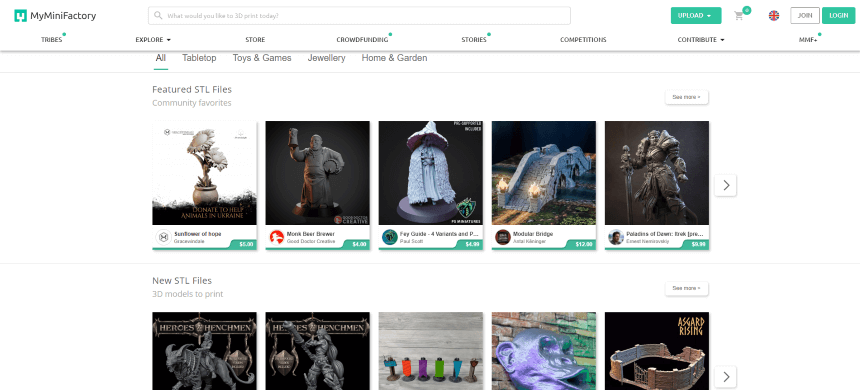
Established in 2013, MyMiniFactory has seen organic growth ever since. At its creation, there was a small collection of available designs, but this grew as more and more designers began to share their 3D printer designs freely.
Now, there are around sixty thousand different designs with heaps of choice and affordable options. MyMiniFactory, unlike Thingiverse, makes sure that every file has passed a test before it is released, and it has to have been printed in the community to test it. This means that there is an overall reduction in printing errors.
In 2018, MyMiniFactory opened its online store. This is becoming more and more important for the site and its users. It provides the opportunity for members to earn from their 3D printer designs. What’s more, there is a competition function whereby designers can compete with one another to win great prizes. Who knows, you might be able to win a new 3D printer like this one! There are new competitions regularly, so it’s important to keep checking for updates and new announcements.
The MyMiniFactory library has an offering of many free designs with some paid but affordable ones. It has an intuitive user interface and a slim design, which makes for easy navigation to benefit its 270,000 plus users.

Founded in 2011, CGTrader is a trading platform where users can buy and sell 3D print designs. It’s also a place where the community can evaluate other users’ uploaded 3D design content. CGTrader allows its users to convert a 3D design into 3D content. These designs are then able to be used for presentations, including augmented reality.
There is also a “Trader Loyalty Discount” that is shown with the symbol of a piggy bank. This symbol is intended to reward regular customers as well as encourage them to purchase further designs. In terms of site navigation, CGTrader is simple, and its interface is really user-friendly. There are drop-down menus that contain several subheadings, which make it easier to find what you’re looking for. The community interacts via challenges that users can take part in. There are many diverse topics so everyone can be involved.
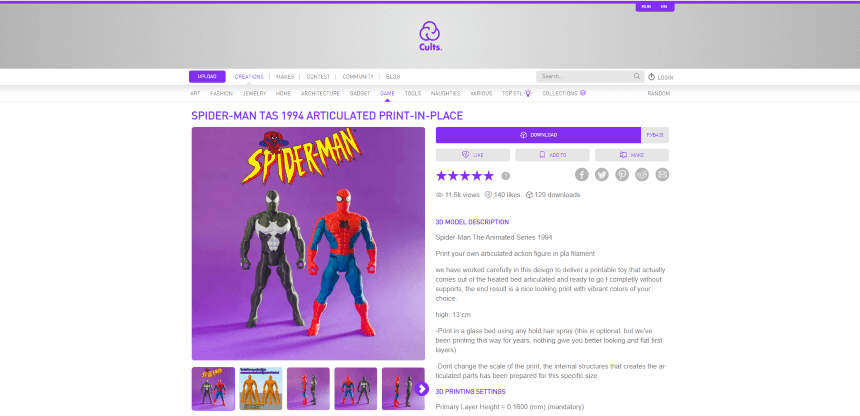
Established in 2014, the Cults website was the first 3D file marketplace that was independent. This site has developed significantly since its founding and now boasts over 800,000 members. Cults has lots of other impressive features, including its special offers, discounts, and sales on accessories like blue tape, a range of filaments, and a range of 3D printers. Check them out at the right time, and you might grab yourself a bargain on something like this.
Cults also run contests where users can test their skills and can win prizes.
Finally, the site has a useful blog that has lots of interesting information for a range of people, from beginners to experts. Cults has a slick interface and uses high-quality images. However, it’s not possible to filter for free designs as easily, which is a little annoying compared to the useability of comparable sites.
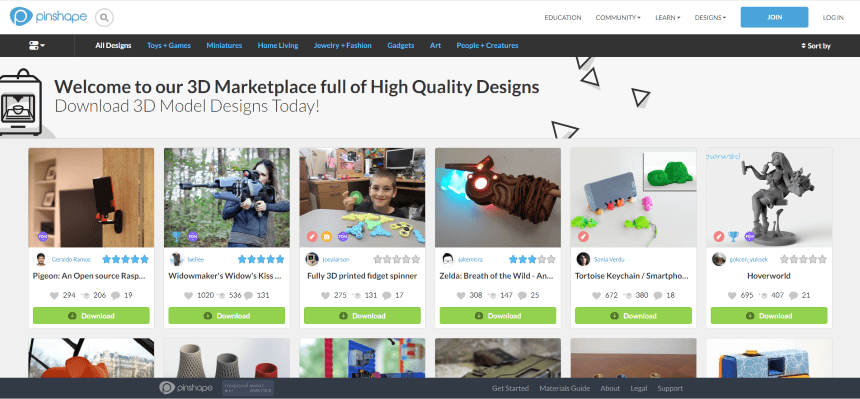
With Pinshape, 3D design and printing are fun and easy. This company prides itself on being a marketplace bringing together 3D designers and 3D printer users. Designers of all levels are able to showcase their designs and be involved in Pinshape’s evolving community. Manufacturers can take advantage of all of the great designs on the site.
As well as the designs themselves, there are functions and filters to sort designs and projects by ratings and popularity. On the lefthand side, you’ll find a tab allowing you to apply filters according to specific criteria. The filters incorporate free designs as well as paid ones. It’s also possible to categorize the designs, so you only need to search in relevant sections.
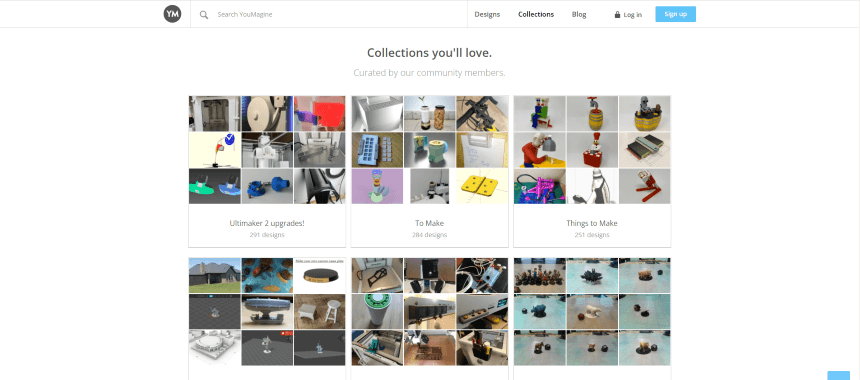
Another Thingiverse alternative is YouMagine. On this site, users can create 3D files and CAD files easily. It’s also designed to help users mix up their designs in innovative ways. That said, YouMagine also goes to great lengths to protect original designs. This includes a shutdown policy, which means they investigate any possible violations of copyright.
YouMagine has over 16,000 3D designs for free. While this isn’t quite as many as Thingiverse, the spectrum and quality of the designs are stronger, which makes this alternative an excellent competitor.
YouMagine is also appealing to developers and schools. If educational establishments are considering getting a 3D printer, they should also look into sites like this to help them get established. When academics participate, they each get their own email address, which is a fantastic way of participating in relevant projects.
Finally, the blog section of YouMagine is valuable too. It contains lots of up-to-date and useful information about new designs and new 3D printers. You can filter it by category to avoid having to scroll through the many articles featured on the site. This blog is updated regularly too.
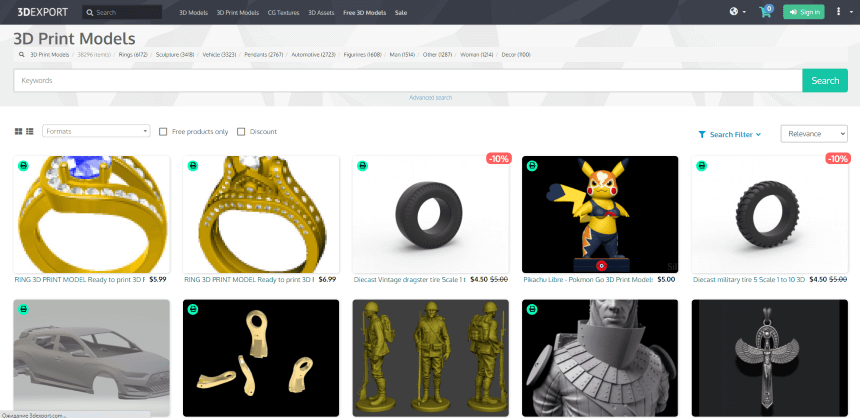
Another of Thingiverse’s established competitors is 3DExport. This 3D design platform was first established in 2004. It is somewhat of a market leader and holds an impressive 200,000 designs, and has half a million members from around the world.
There are lots of educational projects as well as several high-quality tools on the site. You’ll find designs on physics, astronomy, the car industry, mathematics, biology, and engineering. You can filter the designs via the drop-down menu and then choose whether you want to look for free 3D designs or paid ones.
3DExport also has lots of bonus tutorials. These provide a step-by-step guide that allows users to study all the processes with care and deepen their knowledge. All of the tutorials can be rewound and paused so users can make their way through them at their own pace. When designers sell on 3DExport, they can keep as much as 85% of the profits, which is competitive. It’s difficult to find a site with a better incentive. Finally, when users can’t find a design in the right format, they can use 3DExport’s conversion tool to get it into the right format for their needs. All purchases on 3DExport also come with a money-back guarantee as long as it is requested within twenty-four hours.

Thingiverse also has a competitor in 3Dagogo. On this platform, there are lots of assorted designs in a range of categories. Designs are either free or payable. Consumers and designers alike benefit from protective measures in place at 3Dagogo. Designers have the protection of infringement rights, while consumers can choose to be refunded within two weeks of purchase if a design isn’t compatible with their 3D printer brand. What’s more, the help center is a community resource whereby people support each other with 3D printing and design questions and problems.
The 3Dagogo site works collaboratively with Astroprint to provide users with the ability to save, cut, and print designs from all devices that have an internet connection. It’s also possible to organize user designs in the cloud.
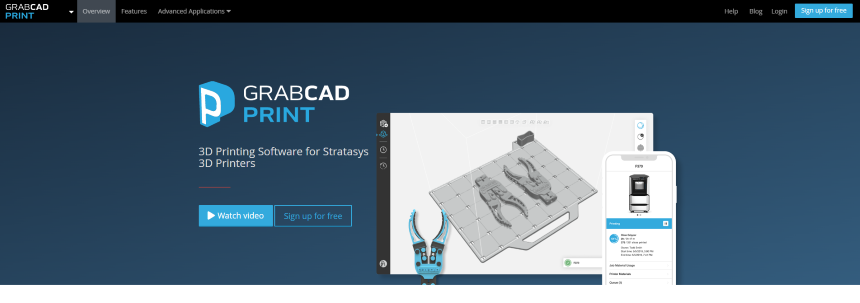
GrabCAD has a user-friendly interface, which indicates to users what they can expect from this platform. In its early days, GrabCAD was a small community of users who shared their 3D designs. When you want to search for a project for your 3D printer, GrabCAD falls short a little. It’s mainly a site for CAD files and isn’t great for hobbyists or basic 3D printers. There is still a good range of 3D designs that are available to download free of charge, however.
The community of GrabCAD is outstanding. It has developed into a professional platform that is awash with engineers, students, and manufacturers alike. The community members are all very experienced and helpful, which is so useful for new members. You’ll find you have really knowledgeable people on board to share valuable exchanges with.
A unique function of GrabCAD is its online workbench. This function means individual teams can work collaboratively on a project. All of the team members can have access rights to the file library and can share and edit them too. This online workbench is also a way of communicating with team members. Discussions can take place here, making this one of the best, if not the best, collaborative design tools for 3D printers.

Another community-driven 3D print design platform that rivals Thingiverse is Repables. This site isn’t guided or represented by a brand of 3D printers, and it’s arguably the most straightforward and easiest of sites to download free 3D designs from.
One more downside to Repables is the lack of printer setting recommendations for the designs. This can be frustrating because it means you might not get the optimal results and could end up investing lots of time in something that doesn’t work how you imagine. It’s a little obvious after reading this that Repables isn’t the best 3D print design site, but it does have the advantage that all of the designs on the site are totally free.
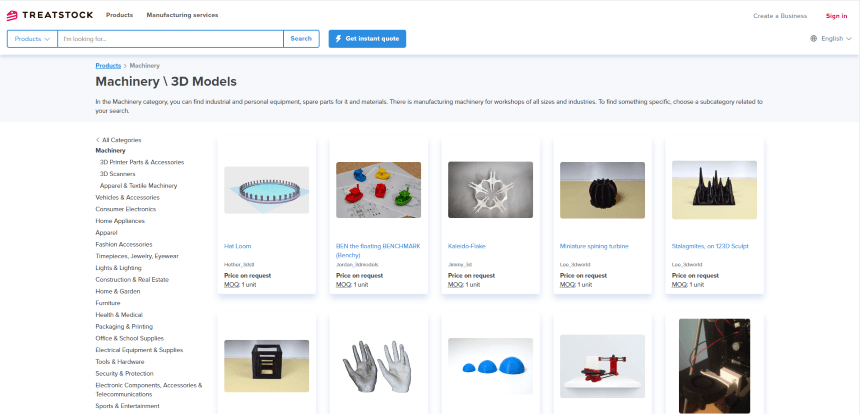
The multi-faceted platform that is Treatstock provides tools for CNC machining as well as 3D printing. The site also has a collection of designs for 3D printing. For anyone without their own 3D printer, it’s possible to use this site to upload a design file and have the professional model created. What’s more, people can also offer their own services.
If you want to find STL files on a search engine, it can be like looking for a needle in a haystack. You can spend hours upon hours online searching through 3D printing websites, hoping you’ll come across what you need. But there are better ways!
When it comes to 3D printing and 3D printer designs, there are always a lot of questions. Here are some of the most Frequently Asked Questions on this topic.
The concept of Thingiverse is that users can print excellent 3D designs based entirely on an existing design, or they can customize and change the designs as they wish. This is because the designs on Thingiverse are on an open license. If users want to amend and change a design, they’re well within their rights to do so, but he or they must also indicate where the design came from originally. This way, people can see quite easily how individual users are combining designs or creating new things from existing designs. Around 50% of the designs on Thingiverse are remixes of original designs, and there are over 1.6 million unique designs uploaded. With people able to use others’ designs freely and modify them creatively, Thingiverse has become an immensely popular site for 3D printing enthusiasts.
There are lots of popular designs for beginners on Thingiverse; here are the top seven:
This is an impressive design that’s simply created for fun. When you’ve printed the model and combined it with a laser, you can draw some fantastic shapes that both you and the kids will love. Think stars and Batman laser shapes. It’s sort of like the 21st century Spirograph!
Printing a hinge is just a crazy but fun idea! If you’ve got DIY projects or you’re making something like a doll’s house, being able to print the exact hinge you need is pretty neat! Some people just want to experiment with something that is useful – and the parametric hinge is certainly that.
Almost as soon as Baby Groot appeared in the trailer of Guardians of the Galaxy 2, a 3D print model design came up. Soon enough, the fever of the 3D print Baby Groot started spreading, and more and more 3D printing enthusiasts had their very own 3D printed Baby Groot model at home. While not particularly useful as a 3D print design, it’s certainly appealing to fans of Guardians of the Galaxy.
The 3DBenchy is the model that almost every 3D printer owner has printed at least once. This cute little design is simply used to benchmark, test, and calibrate your 3D printer – but they made it cute, so it’s a fun process to go through! If you have kids, you can please them at the same time as checking your 3D printer settings. It’s a win-win situation!
3D printers are great when they produce models that serve a function and can hold something! The Makerbot Headphone Stand has proved infinitely popular on Thingiverse. After all, it’s something so practical that people don’t realize how they lived without it before. And when your friends pop round and see it, they’ll all be requesting you print one for them too!
With this 3D print model, you can hold up your phone or a lightweight camera to take pictures or record a video. This is really useful for anyone who wants to take professional-looking photos of their 3D printed models or record a time-lapse of a model being printed. As we’ve said before, when a 3D print model could hold something, it’s always a good one to make! So, for all those budding TikTok users who are into 3D printing, here’s the best thing you can print today!
Whether you have kids or not, you’ll love this clever 3D-printed marble machine designed by Tulio Laanen. It’s a wonderfully designed toy that incorporates a simple joy of a marble run with a complex 3d printer design.
A remarkable thing about using a 3D printer is how people come together and work as a community. The sites we’ve mentioned above all have a strong community element to them whereby people are willing to share their designs, time, or expertise with others. It’s through the individual generosity of people creating and designing 3D models to share online that 3D printing as a concept and a hobby has become much more accessible to people – even ones who have previously been seen as technophobes. The beauty of the 3D design is that it appeals to everyone, and these communities help everyone, regardless of their experience and expertise.
Of course, Thingiverse is still by far the most popular 3D printing site out there for purchasing or providing 3D paid or free designs. When users are actively seeking interesting 3D designs and projects to work on, it’s typically Thingiverse they visit first. However, it’s important that people don’t limit themselves to one site, believing that Thingiverse is the be-all and end-all of downloadable 3D print designs and models. As we’ve seen in this article, there are tons of other helpful sites out there (and many of these don’t have the long wait times that you often get with Thingiverse!
